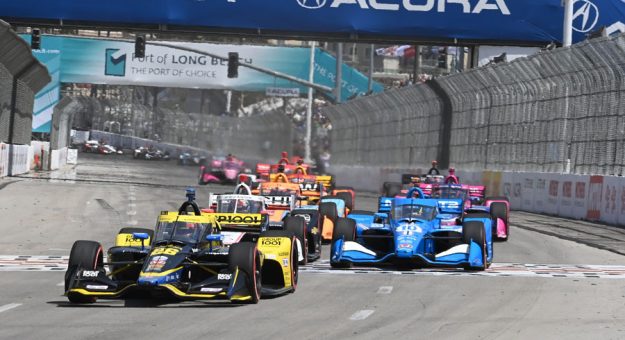WILMETTE, Ill. — As the motorsports industry begins to settle in for a full season of normalized racing, the focus is turning toward off-track business matters.
This month, the business of speed will take another look at the financial aspects of entertainment on racing, where they stand and what’s lies ahead. The reason media matters is the amount of dollars it brings to the sport and its contribution to financial coffers of industry stakeholders.
Ticket sales and concessions has long been the primary driver of revenue for tracks. As these areas have stagnated, the growth of broadcast dollars has exceeded these categories.
The early season races have delivered strong ratings across the board this year. There will be week-to-week variances based on the venue, weather and landscape of competitive programming.
For each race, agencies typically report Total Audience Delivery, which represents the combined viewership of broadcast/cable and streaming platforms.
IndyCar viewership is at its highest level in nearly two decades. Ratings for the series are up more than 30 percent compared to last year. Through the first three races of the season, the NTT IndyCar Series is averaging 1.148 million viewers.
NASCAR is also recording impressive numbers. The Cup Series was averaging 4.76 million viewers, an increase of 17 percent over the first eight races of last season.
The ratings for Formula 1 have been solid. The global footprint of the series creates variability with late/ early start times. Through the early races, Formula 1 was averaging in excess of 1 million viewers — up more than 20 percent from the prior season.
The Netflix series “Drive to Survive” has bolstered the popularity of Formula 1, especially in the United States. Season four launched prior to the beginning of the Formula 1 campaign, with skyrocketing popularity. It brought the sport into the homes of a whole new audience, who became captivated by a canid, behind-the-scenes look at the drivers and teams.
The production team behind the series, Box to Box Films, is fielding inquiries from many sports properties, including the PGA Tour and Tour de France. NASCAR, IndyCar and other sanctioning bodies have film crews at tracks and race shops gathering content for multi-channel platform distribution.
Several of the broadcast contracts for motorsports are expiring over the next few years.
Sports remains a desirable category due to it favorable characteristics — live content, appointment viewing and audience demographics.
Media companies heavily depend on sports content and rights costs continue to rise.
The NFL remains the most lucrative property with annual rights fees at $10 billion per year. Multiple entities are involved in the latest 10-year contract that runs from 2023 to ’33. Football games are broadcast four nights a week and the Super Bowl attracts more than 100 million viewers.
The next closest league is the NBA at $2.6 billion per year, followed by Major League Baseball at $1.6 billion and the NHL at $625 million. The Premier League (soccer) is at $450 million for U.S. rights.
The current broadcast-rights deal for NASCAR is at $820 million annually. The 10-year deal was signed in 2015 and expires after the 2024 season.
Several factors will come into play, including the stability long-term deals provide, the reallocation of traditional revenue splits (tracks, 65 percent; teams, 25 percent; and sanctioning body, 10 percent) and the dynamics of multi-channel distribution (broadcast vs. streaming).
The global value of Formula 1’s media rights exceeds $650 million. Viewed in more than 100 countries, the average global viewership was 60.3 million per race.
In the U.S., ESPN has carried Formula 1 since 2018 with a non-traditional contract. The current deal expires this year.
Record viewership and attendance has led to new races in the U.S. and are raising expectations for Formula 1’s U.S.-based owner, Liberty Media. That renewal may be worth up to $75 million per year.
Motorsports retains a prime position in the media-rights deal pack.
A long-term track record of solid results bodes well for the next set of negotiations.
